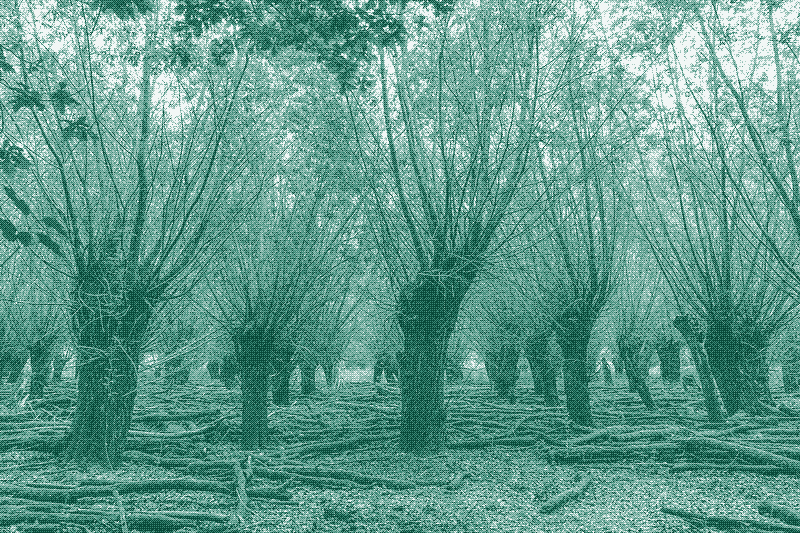
How is Cutting Down Trees Sustainable?
Advocating for the use of biomass as a renewable source of energy – replacing fossil fuels – has become controversial among environmentalists. The comments on the previous article, which discussed thermoelectric stoves, illustrate this:
- “As the recent film Planet of the Humans points out, biomass a.k.a. dead trees is not a renewable resource by any means, even though the EU classifies it as such.”
- “How is cutting down trees sustainable?”
- “Article fails to mention that a wood stove produces more CO2 than a coal power plant for every ton of wood/coal that is burned.”
- “This is pure insanity. Burning trees to reduce our carbon footprint is oxymoronic.”
- “The carbon footprint alone is just horrifying.”
- “The biggest problem with burning anything is once it’s burned, it’s gone forever.”
- “The only silly question I can add to to the silliness of this piece, is where is all the wood coming from?”
In contrast to what the comments suggest, the article does not advocate the expansion of biomass as an energy source. Instead, it argues that already burning biomass fires – used by roughly 40% of today’s global population – could also produce electricity as a by-product, if they are outfitted with thermoelectric modules. Nevertheless, several commenters maintained their criticism after they read the article more carefully. One of them wrote: “We should aim to eliminate the burning of biomass globally, not make it more attractive.”
Apparently, high-tech thinking has permeated the minds of (urban) environmentalists to such an extent that they view biomass as an inherently troublesome energy source – similar to fossil fuels. To be clear, critics are right to call out unsustainable practices in biomass production. However, these are the consequences of a relatively recent, “industrial” approach to forestry. When we look at historical forest management practices, it becomes clear that biomass is potentially one of the most sustainable energy sources on this planet.
Coppicing: Harvesting Wood Without Killing Trees
Nowadays, most wood is harvested by killing trees. Before the Industrial Revolution, a lot of wood was harvested from living trees, which were coppiced. The principle of coppicing is based on the natural ability of many broad-leaved species to regrow from damaged stems or roots – damage caused by fire, wind, snow, animals, pathogens, or (on slopes) falling rocks. Coppice management involves the cutting down of trees close to ground level, after which the base – called the “stool” – develops several new shoots, resulting in a multi-stemmed tree.
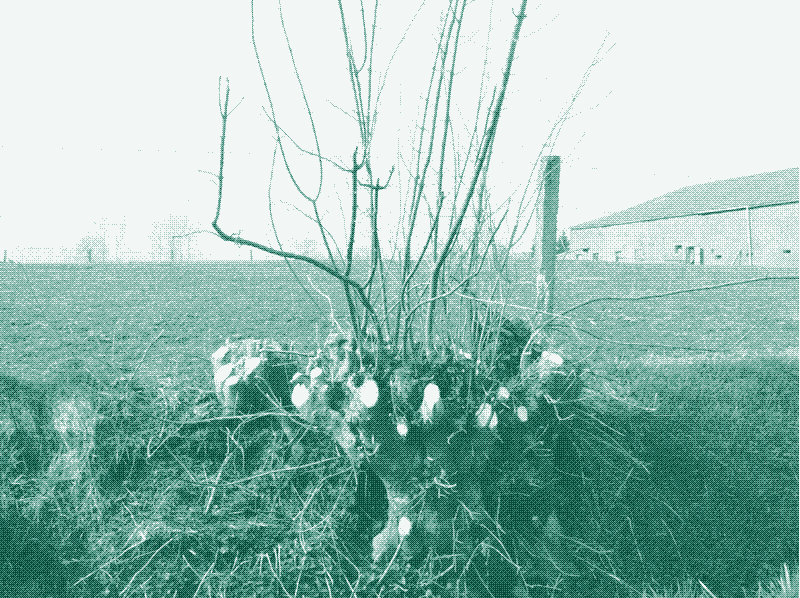
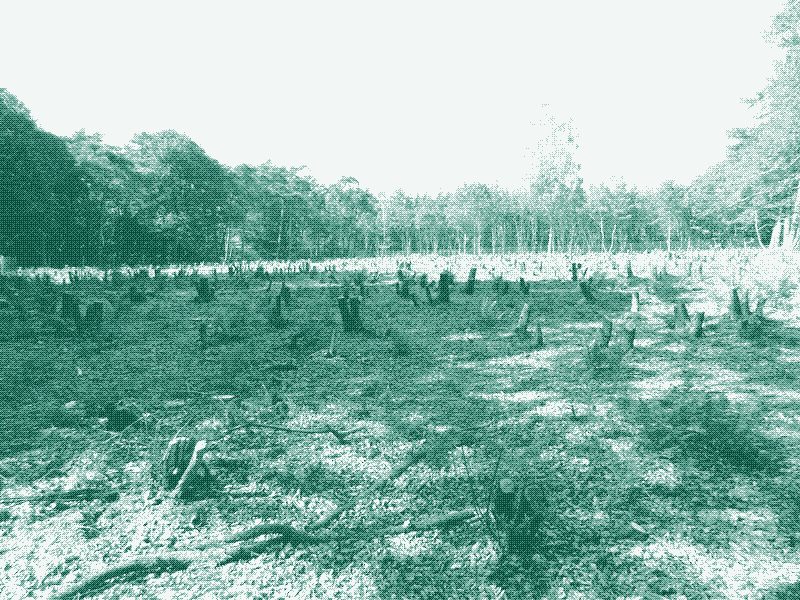

When we think of a forest or a tree plantation, we imagine it as a landscape stacked with tall trees. However, until the beginning of the twentieth century, at least half of the forests in Europe were coppiced, giving them a more bush-like appearance. 1 The coppicing of trees can be dated back to the stone age, when people built pile dwellings and trackways crossing prehistoric fenlands using thousands of branches of equal size – a feat that can only be accomplished by coppicing. 2
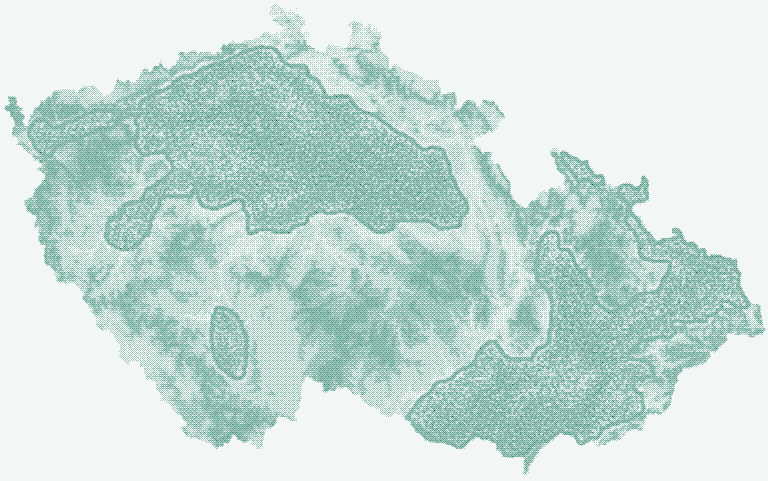
![Maps: The approximate historical range of coppice forests in the Czech Republic (above) and in Spain (below). Source: "Coppice forests in Europe", see [^1]](https://solar.lowtechmagazine.com/2020/09/how-to-make-biomass-energy-sustainable-again/images/dithers/map-spain_dithered.png)
Ever since then, the technique formed the standard approach to wood production – not just in Europe but almost all over the world. Coppicing expanded greatly during the eighteenth and nineteenth centuries, when population growth and the rise of industrial activity (glass, iron, tile and lime manufacturing) put increasing pressure on wood reserves.
Short Rotation Cycles
Because the young shoots of a coppiced tree can exploit an already well-developed root system, a coppiced tree produces wood faster than a tall tree. Or, to be more precise: although its photosynthetic efficiency is the same, a tall tree provides more biomass below ground (in the roots) while a coppiced tree produces more biomass above ground (in the shoots) – which is clearly more practical for harvesting. 3 Partly because of this, coppicing was based on short rotation cycles, often of around two to four years, although both yearly rotations and rotations up to 12 years or longer also occurred.
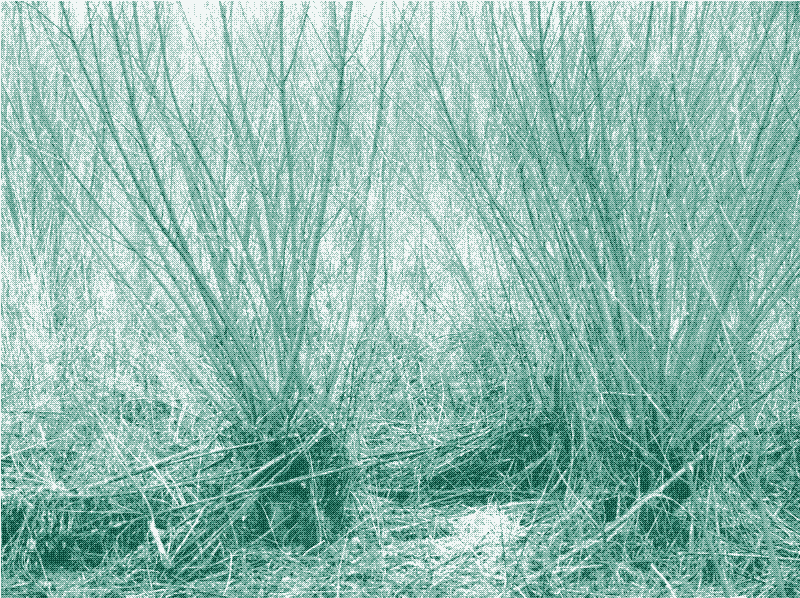
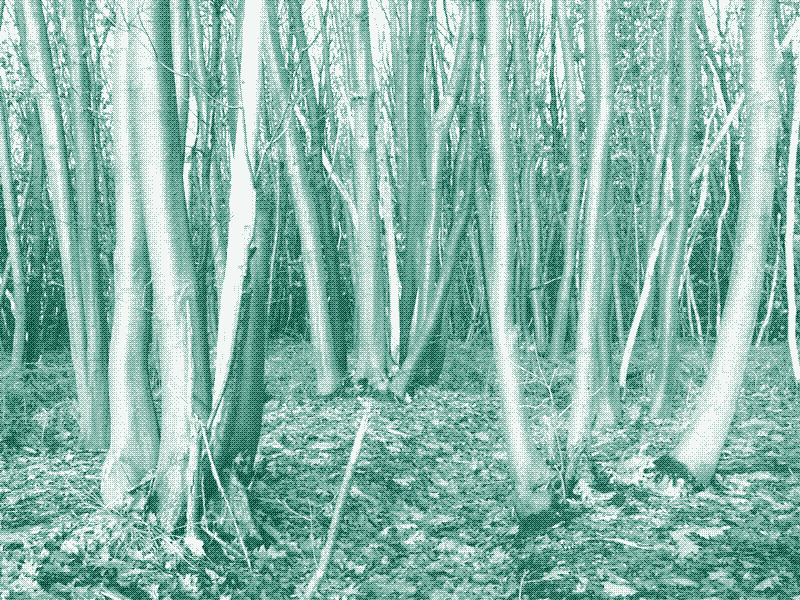
Because of the short rotation cycles, a coppice forest was a very quick, regular and reliable supplier of firewood. Often, it was cut up into a number of equal compartments that corresponded to the number of years in the planned rotation. For example, if the shoots were harvested every three years, the forest was divided into three parts, and one of these was coppiced each year. Short rotation cycles also meant that it took only a few years before the carbon released by the burning of the wood was compensated by the carbon that was absorbed by new growth, making a coppice forest truly carbon neutral. In very short rotation cycles, new growth could even be ready for harvest by the time the old growth wood had dried enough to be burned.
In some tree species, the stump sprouting ability decreases with age. After several rotations, these trees were either harvested in their entirety and replaced by new trees, or converted into a coppice with a longer rotation. Other tree species resprout well from stumps of all ages, and can provide shoots for centuries, especially on rich soils with a good water supply. Surviving coppice stools can be more than 1,000 years old.
Biodiversity
A coppice can be called a “coppice forest” or a “coppice plantation”, but in reality it was neither a forest nor a plantation – perhaps something in between. Although managed by humans, coppice forests were not environmentally destructive, on the contrary. Harvesting wood from living trees instead of killing them is beneficial for the life forms that depend on them. Coppice forests can have a richer biodiversity than unmanaged forests, because they always contain areas with different stages of light and growth. None of this is true in industrial wood plantations, which support little or no plant and animal life, and which have longer rotation cycles (of at least twenty years).
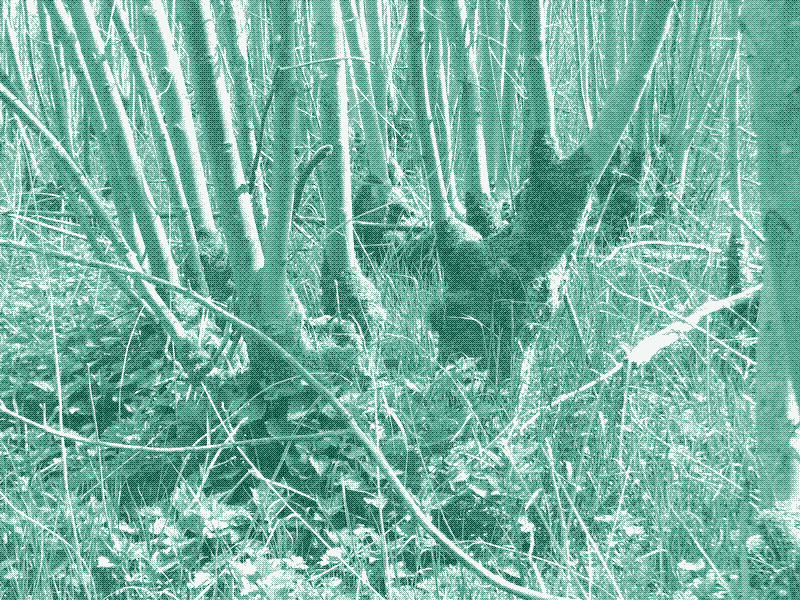
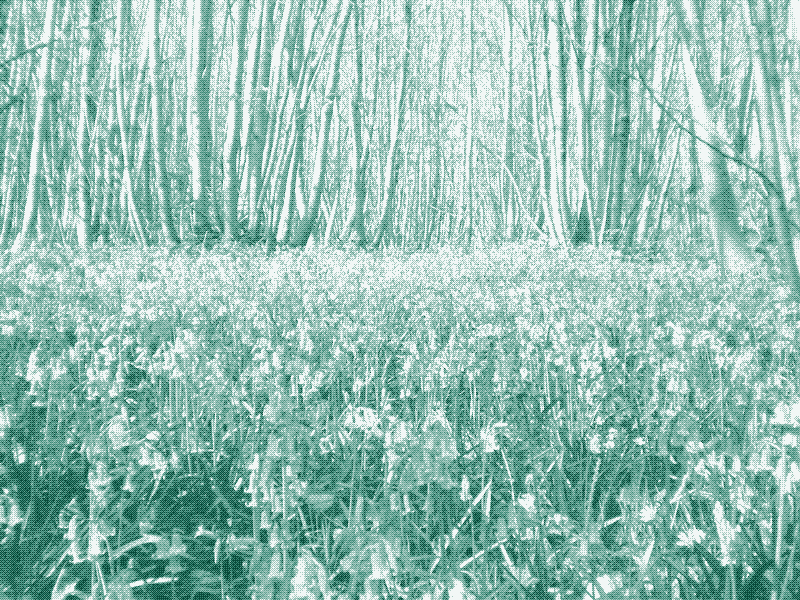
Our forebears also cut down tall, standing trees with large-diameter stems – just not for firewood. Large trees were only “killed” when large timber was required, for example for the construction of ships, buildings, bridges, and windmills. 4 Coppice forests could contain tall trees (a “coppice-with-standards”), which were left to grow for decades while the surrounding trees were regularly pruned. However, even these standing trees could be partly coppiced, for example by harvesting their side branches while they were alive (shredding).
Multipurpose Trees
The archetypical wood plantation promoted by the industrial world involves regularly spaced rows of trees in even-aged, monocultural stands, providing a single output – timber for construction, pulpwood for paper production, or fuelwood for power plants. In contrast, trees in pre-industrial coppice forests had multiple purposes. They provided firewood, but also construction materials and animal fodder.
The targeted wood dimensions, determined by the use of the shoots, set the rotation period of the coppice. Because not every type of wood was suited for every type of use, coppiced forests often consisted of a variety of tree species at different ages. Several age classes of stems could even be rotated on the same coppice stool (“selection coppice”), and the rotations could evolve over time according to the needs and priorities of the economic activities.
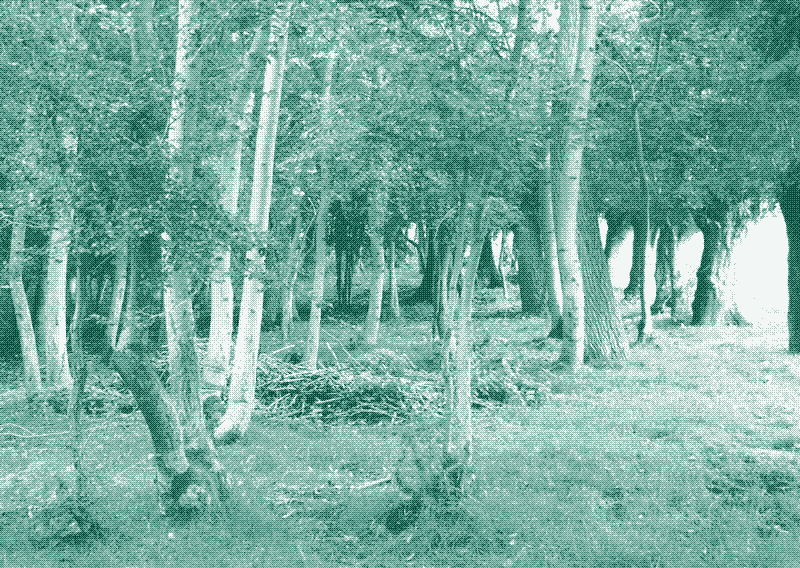
Coppiced wood was used to build almost anything that was needed in a community. 5 For example, young willow shoots, which are very flexible, were braided into baskets and crates, while sweet chestnut prunings, which do not expand or shrink after drying, were used to make all kinds of barrels. Ash and goat willow, which yield straight and sturdy wood, provided the material for making the handles of brooms, axes, shovels, rakes and other tools.
Young hazel shoots were split along the entire length, braided between the wooden beams of buildings, and then sealed with loam and cow manure – the so-called wattle-and-daub construction. Hazel shoots also kept thatched roofs together. Alder and willow, which have almost limitless life expectancy under water, were used as foundation piles and river bank reinforcements. The construction wood that was taken out of a coppice forest did not diminish its energy supply: because the artefacts were often used locally, at the end of their lives they could still be burned as firewood.
![Image: Harvesting leaf fodder in Leikanger kommune, Norway. Credit: Leif Hauge. Source: [^19]](https://solar.lowtechmagazine.com/2020/09/how-to-make-biomass-energy-sustainable-again/images/dithers/leaf-fodder_dithered.png)
Coppice forests also supplied food. On the one hand, they provided people with fruits, berries, truffles, nuts, mushrooms, herbs, honey, and game. On the other hand, they were an important source of winter fodder for farm animals. Before the Industrial Revolution, many sheep and goats were fed with so-called “leaf fodder” or “leaf hay” – leaves with or without twigs. 6
Elm and ash were among the most nutritious species, but sheep also got birch, hazel, linden, bird cherry and even oak, while goats were also fed with alder. In mountainous regions, horses, cattle, pigs and silk worms could be given leaf hay too. Leaf fodder was grown in rotations of three to six years, when the branches provided the highest ratio of leaves to wood. When the leaves were eaten by the animals, the wood could still be burned.
Pollards & Hedgerows
Coppice stools are vulnerable to grazing animals, especially when the shoots are young. Therefore, coppice forests were usually protected against animals by building a ditch, fence or hedge around them. In contrast, pollarding allowed animals and trees to be mixed on the same land. Pollarded trees were pruned like coppices, but to a height of at least two metres to keep the young shoots out of reach of grazing animals.
![Illustration: Different ways of lopping trees. Credit: Helen J. Read, see [^1]](https://solar.lowtechmagazine.com/2020/09/how-to-make-biomass-energy-sustainable-again/images/dithers/coppice-forms_dithered.png)
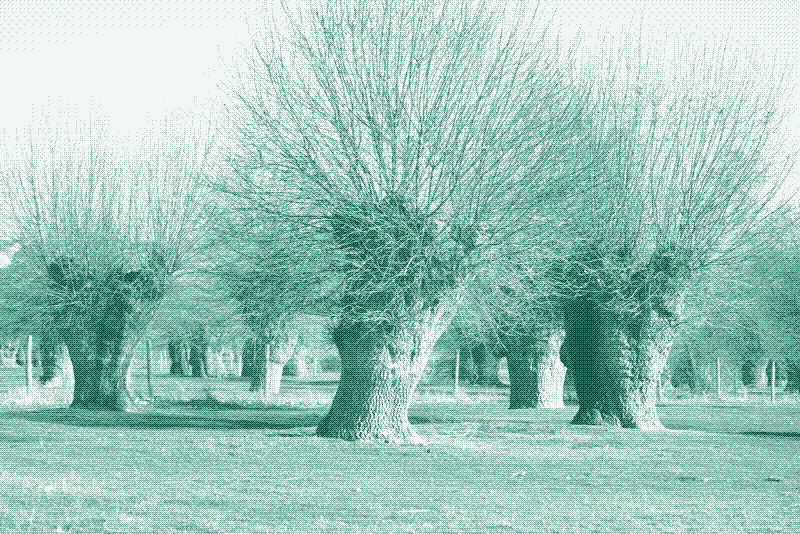
Wooded meadows and wood pastures – mosaics of pasture and forest – combined the grazing of animals with the production of fodder, firewood and/or construction wood from pollarded trees. “Pannage” or “mast feeding” was the method of sending pigs into pollarded oak forests during autumn, where they could feed on fallen acorns. The system formed the mainstay of pork production in Europe for centuries. 7 The “meadow orchard” or “grazed orchard” combined fruit cultivation and grazing – pollarded fruit trees offered shade to the animals, while the animals could not reach the fruit but fertilised the trees.
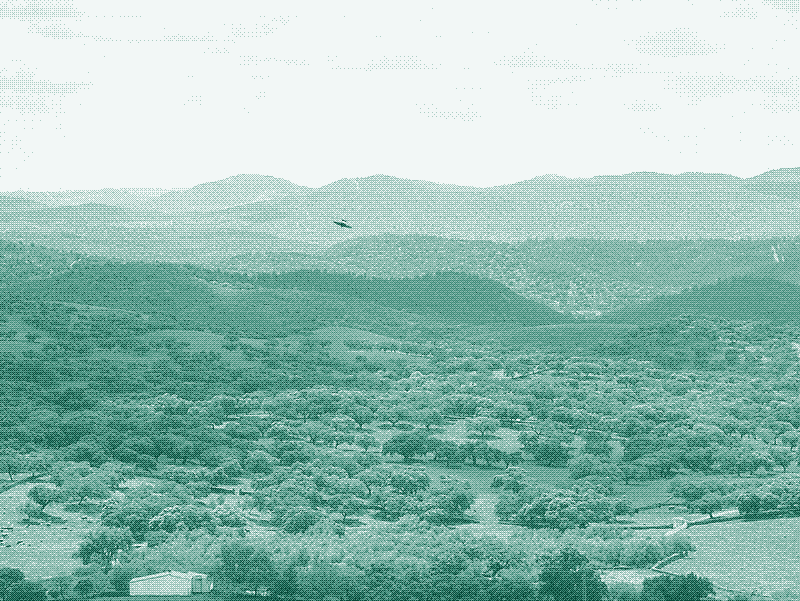

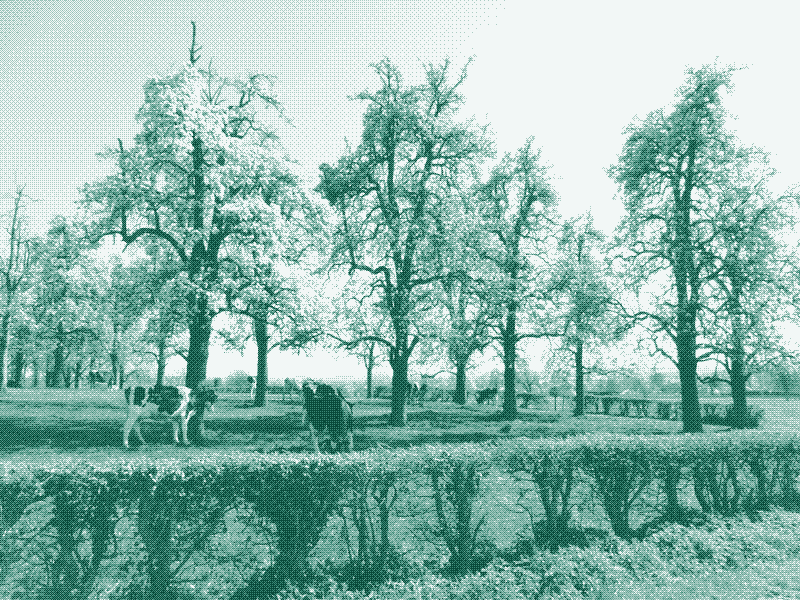
While agriculture and forestry are now strictly separated activities, in earlier times the farm was the forest and vice versa. It would make a lot of sense to bring them back together, because agriculture and livestock production – not wood production – are the main drivers of deforestation. If trees provide animal fodder, meat and dairy production should not lead to deforestation. If crops can be grown in fields with trees, agriculture should not lead to deforestation. Forest farms would also improve animal welfare, soil fertility and erosion control.
Line Plantings
Extensive plantations could consist of coppiced or pollarded trees, and were often managed as a commons. However, coppicing and pollarding were not techniques seen only in large-scale forest management. Small woodlands in between fields or next to a rural house and managed by an individual household would be coppiced or pollarded. A lot of wood was also grown as line plantings around farmyards, fields and meadows, near buildings, and along paths, roads and waterways. Here, lopped trees and shrubs could also appear in the form of hedgerows, thickly planted hedges. 8
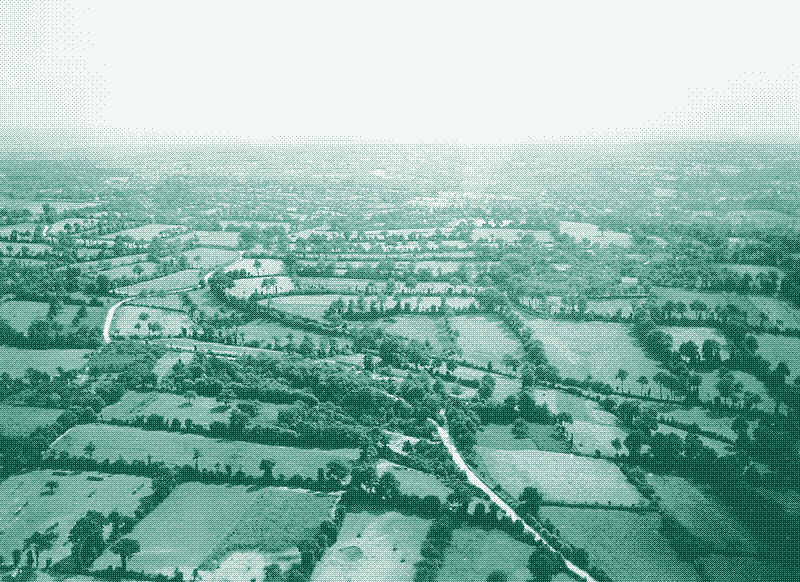
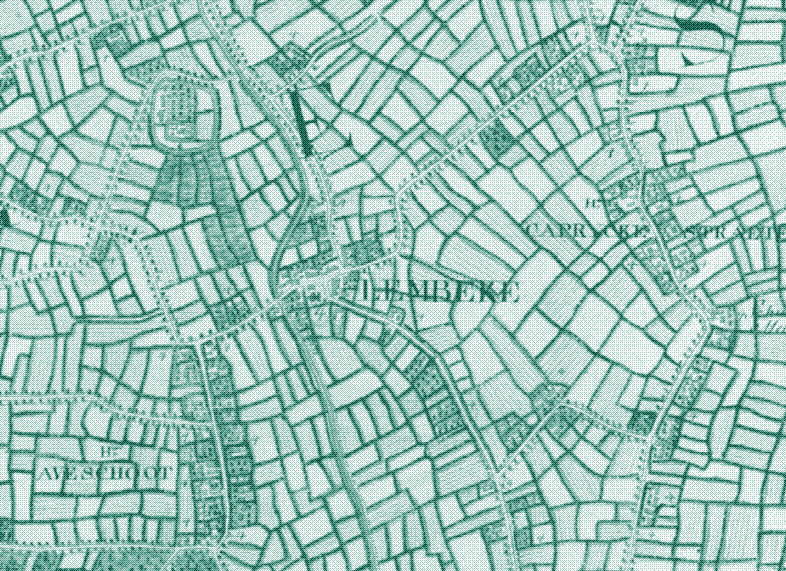
Although line plantings are usually associated with the use of hedgerows in England, they were common in large parts of Europe. In 1804, English historian Abbé Mann expressed his surprise when he wrote about his trip to Flanders (today part of Belgium): “All fields are enclosed with hedges, and thick set with trees, insomuch that the whole face of the country, seen from a little height, seems one continued wood”. Typical for the region was the large number of pollarded trees. 8
Like coppice forests, line plantings were diverse and provided people with firewood, construction materials and leaf fodder. However, unlike coppice forests, they had extra functions because of their specific location. 9 One of these was plot separation: keeping farm animals in, and keeping wild animals or cattle grazing on common lands out. Various techniques existed to make hedgerows impenetrable, even for small animals such as rabbits. Around meadows, hedgerows or rows of very closely planted pollarded trees (“pollarded tree hedges”) could stop large animals such as cows. If willow wicker was braided between them, such a line planting could also keep small animals out. 8
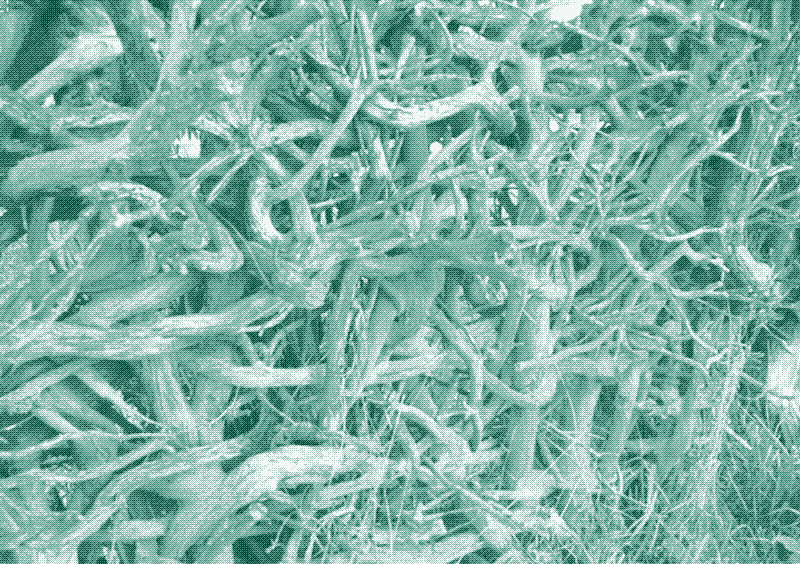
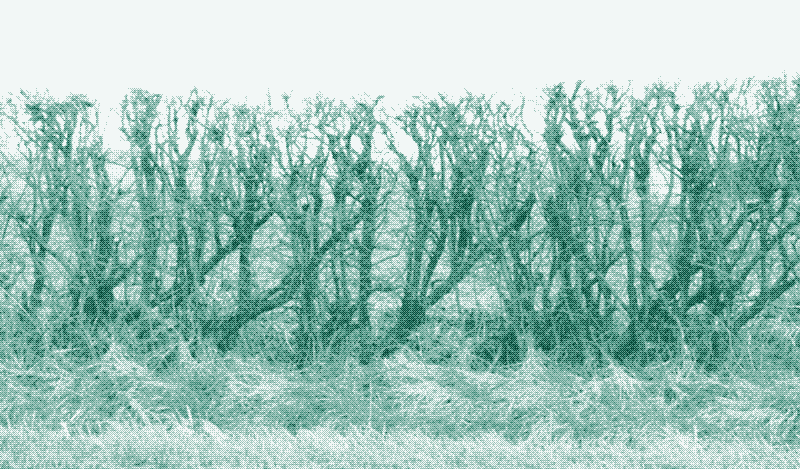
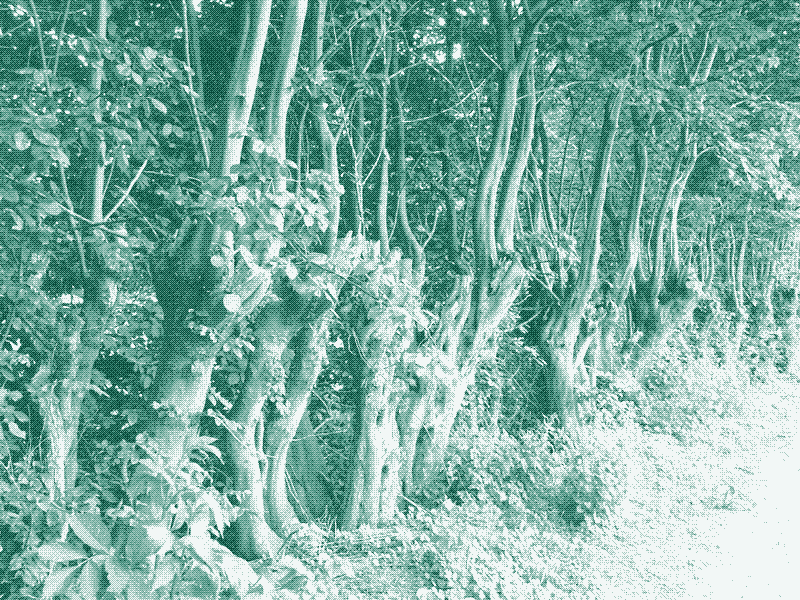
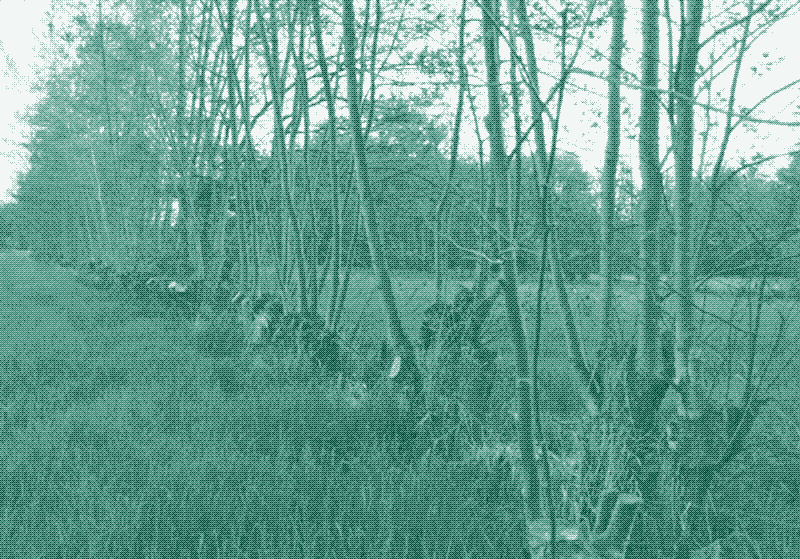
Trees and line plantings also offered protection against the weather. Line plantings protected fields, orchards and vegetable gardens against the wind, which could erode the soil and damage the crops. In warmer climates, trees could shield crops from the sun and fertilize the soil. Pollarded lime trees, which have very dense foliage, were often planted right next to wattle-and-daub buildings in order to protect them from wind, rain and sun. 10
Dunghills were protected by one or more trees, preventing the valuable resource from evaporating due to sun or wind. In the yard of a watermill, the wooden water wheel was shielded by a tree to prevent the wood from shrinking or expanding in times of drought or inactivity. 8
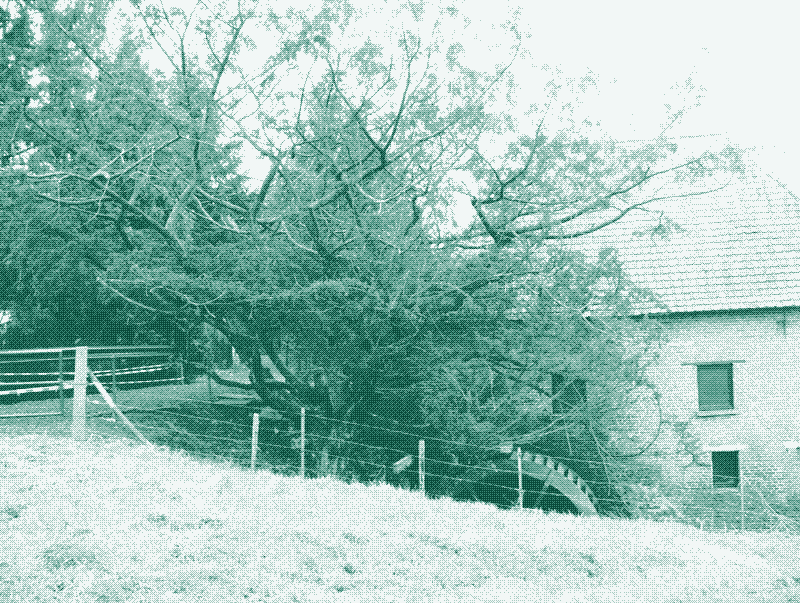
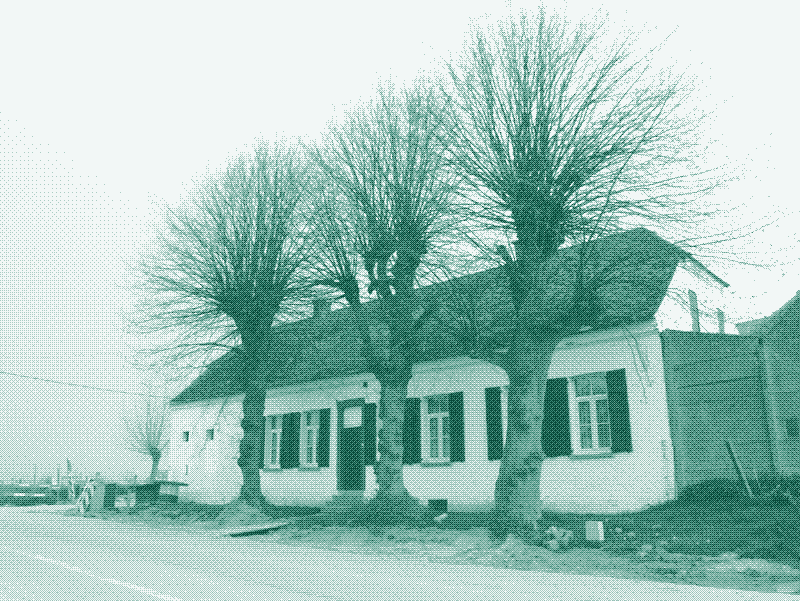
Location Matters
Along paths, roads and waterways, line plantings had many of the same location-specific functions as on farms. Cattle and pigs were hoarded over dedicated droveways lined with hedgerows, coppices and/or pollards. When the railroads appeared, line plantings prevented collisions with animals. They protected road travellers from the weather, and marked the route so that people and animals would not get off the road in a snowy landscape. They prevented soil erosion at riverbanks and hollow roads.
All functions of line plantings could be managed by dead wood fences, which can be moved more easily than hedgerows, take up less space, don’t compete for light and food with crops, and can be ready in a short time. 11 However, in times and places were wood was scarce a living hedge was often preferred (and sometimes obliged) because it was a continuous wood producer, while a dead wood fence was a continuous wood consumer. A dead wood fence may save space and time on the spot, but it implies that the wood for its construction and maintenance is grown and harvested elsewhere in the surroundings.
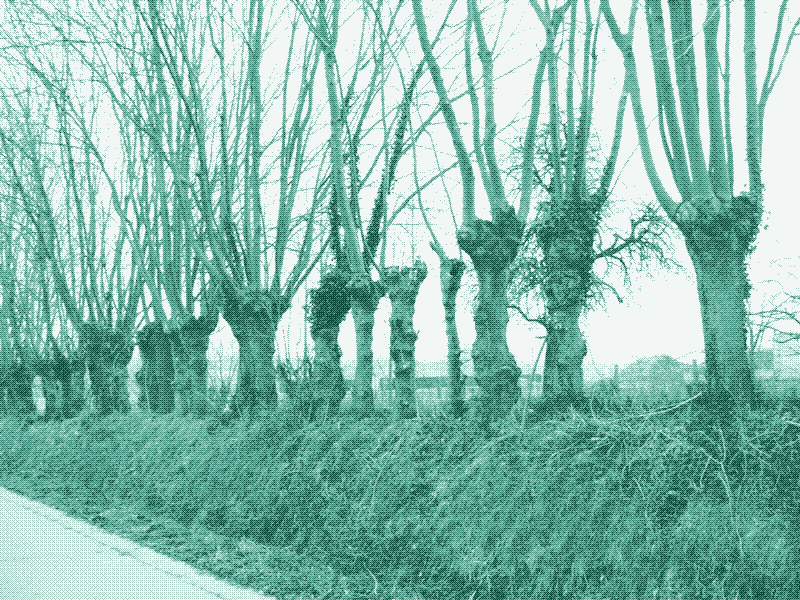
Local use of wood resources was maximised. For example, the tree that was planted next to the waterwheel, was not just any tree. It was red dogwood or elm, the wood that was best suited for constructing the interior gearwork of the mill. When a new part was needed for repairs, the wood could be harvested right next to the mill. Likewise, line plantings along dirt roads were used for the maintenance of those roads. The shoots were tied together in bundles and used as a foundation or to fill up holes. Because the trees were coppiced or pollarded and not cut down, no function was ever at the expense of another.
Nowadays, when people advocate for the planting of trees, targets are set in terms of forested area or the number of trees, and little attention is given to their location – which could even be on the other side of the world. However, as these examples show, planting trees closeby and in the right location can significantly optimise their potential.
Shaped by Limits
Coppicing has largely disappeared in industrial societies, although pollarded trees can still be found along streets and in parks. Their prunings, which once sustained entire communities, are now considered waste products. If it worked so well, why was coppicing abandoned as a source of energy, materials and food? The answer is short: fossil fuels. Our forebears relied on coppice because they had no access to fossil fuels, and we don’t rely on coppice because we have.
Our forebears relied on coppice because they had no access to fossil fuels, and we don’t rely on coppice because we have
Most obviously, fossil fuels have replaced wood as a source of energy and materials. Coal, gas and oil took the place of firewood for cooking, space heating, water heating and industrial processes based on thermal energy. Metal, concrete and brick – materials that had been around for many centuries – only became widespread alternatives to wood after they could be made with fossil fuels, which also brought us plastics. Artificial fertilizers – products of fossil fuels – boosted the supply and the global trade of animal fodder, making leaf fodder obsolete. The mechanisation of agriculture – driven by fossil fuels – led to farming on much larger plots along with the elimination of trees and line plantings on farms.
Less obvious, but at least as important, is that fossil fuels have transformed forestry itself. Nowadays, the harvesting, processing and transporting of wood is heavily supported by the use of fossil fuels, while in earlier times they were entirely based on human and animal power – which themselves get their fuel from biomass. It was the limitations of these power sources that created and shaped coppice management all over the world.
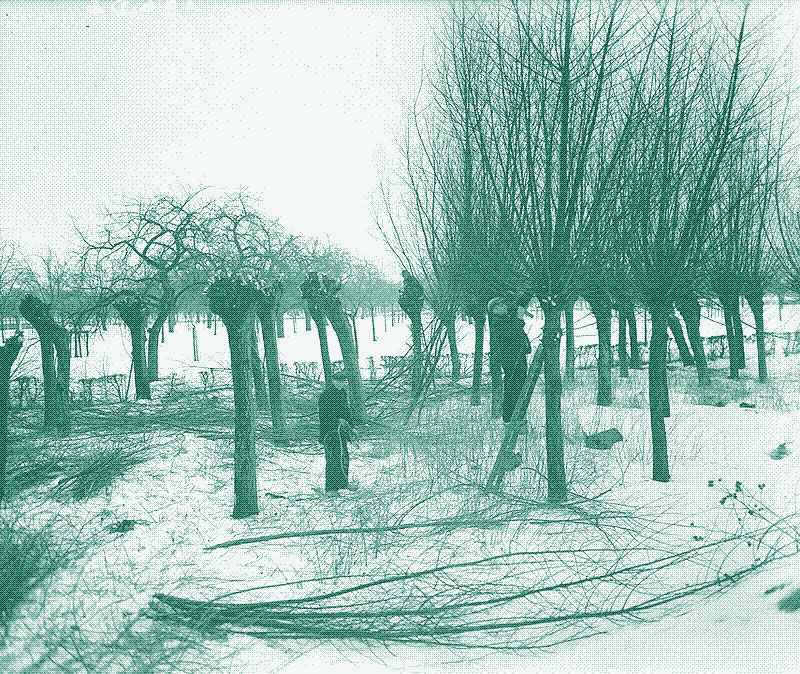
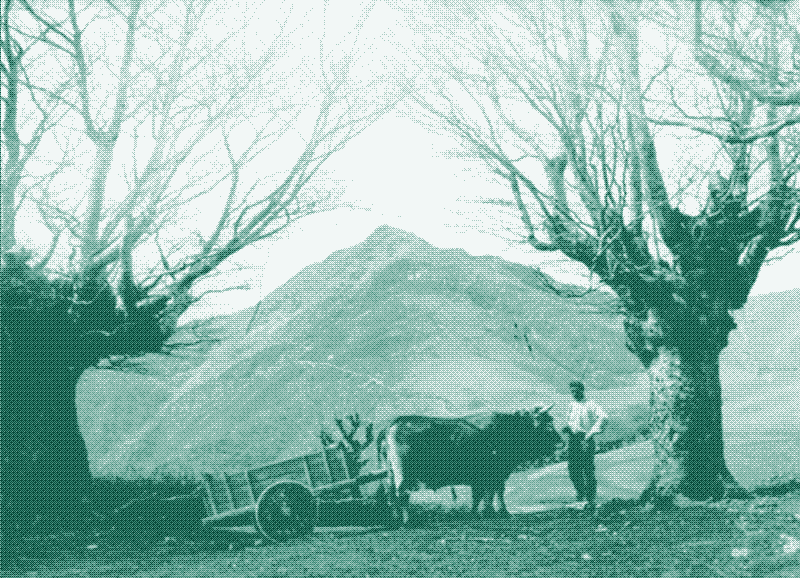
Wood was harvested and processed by hand, using simple tools such as knives, machetes, billhooks, axes and (later) saws. Because the labour requirements of harvesting trees by hand increase with stem diameter, it was cheaper and more convenient to harvest many small branches instead of cutting down a few large trees. Furthermore, there was no need to split coppiced wood after it was harvested. Shoots were cut to a length of around one metre, and tied together in “faggots”, which were an easy size to handle manually.
It was the limitations of human and animal power that created and shaped coppice management all over the world
To transport firewood, our forebears relied on animal drawn carts over often very bad roads. This meant that, unless it could be transported over water, firewood had to be harvested within a radius of at most 15-30 km from the place where it was used. 12 Beyond those distances, the animal power required for transporting the firewood was larger than its energy content, and it would have made more sense to grow firewood on the pasture that fed the draft animal. 13 There were some exceptions to this rule. Some industrial activities, like iron and potash production, could be moved to more distant forests – transporting iron or potash was more economical than transporting the firewood required for their production. However, in general, coppice forests (and of course also line plantings) were located in the immediate vicinity of the settlement where the wood was used.
In short, coppicing appeared in a context of limits. Because of its faster growth and versatile use of space, it maximised the local wood supply of a given area. Because of its use of small branches, it made manual harvesting and transporting as economical and convenient as possible.
Can Coppicing be Mechanised?
From the twentieth century onwards, harvesting was done by motor saw, and since the 1980s, wood is increasingly harvested by powerful vehicles that can fell entire trees and cut them on the spot in a matter of minutes. Fossil fuels have also brought better transportation infrastructures, which have unlocked wood reserves that were inaccessible in earlier times. Consequently, firewood can now be grown on one side of the planet and consumed at the other.
The use of fossil fuels adds carbon emissions to what used to be a completely carbon neutral activity, but much more important is that it has pushed wood production to a larger – unsustainable – scale. [14] Fossil fueled transportation has destroyed the connection between supply and demand that governed local forestry. If the wood supply is limited, a community has no other choice than to make sure that the wood harvest rate and the wood renewal rate are in balance. Otherwise, it risks running out of fuelwood, craft wood and animal fodder, and it would be abandoned.
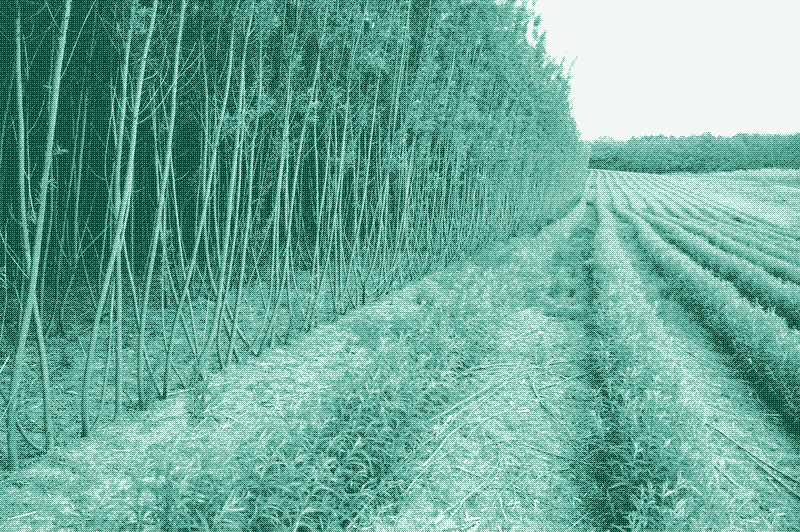
Likewise, fully mechanised harvesting has pushed forestry to a scale that is incompatible with sustainable forest management. Our forebears did not cut down large trees for firewood, because it was not economical. Today, the forest industry does exactly that because mechanisation makes it the most profitable thing to do. Compared to industrial forestry, where one worker can harvest up to 60 m3 of wood per hour, coppicing is extremely labour-intensive. Consequently, it cannot compete in an economic system that fosters the replacement of human labour with machines powered by fossil fuels.
Coppicing cannot compete in an economic system that fosters the replacement of human labour with machines powered by fossil fuels
Some scientists and engineers have tried to solve this by demonstrating coppice harvesting machines. 14 However, mechanisation is a slippery slope. The machines are only practical and economical on somewhat larger tracts of woodland (>1 ha) which contain coppiced trees of the same species and the same age, with only one purpose (often fuelwood for power generation). As we have seen, this excludes many older forms of coppice management, such as the use of multipurpose trees and line plantings. Add fossil fueled transportation to the mix, and the result is a type of industrial coppice management that brings few improvements.
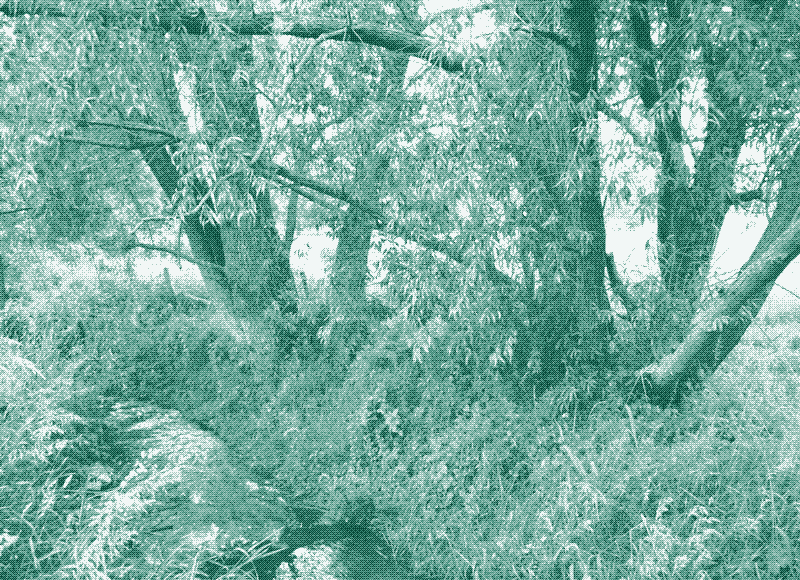
Sustainable forest management is essentially local and manual. This doesn’t mean that we need to copy the past to make biomass energy sustainable again. For example, the radius of the wood supply could be increased by low energy transport options, such as cargo bikes and aerial ropeways, which are much more efficient than horse or ox drawn carts over bad roads, and which could be operated without fossil fuels. Hand tools have also improved in terms of efficiency and ergonomics. We could even use motor saws that run on biofuels – a much more realistic application than their use in car engines. 15
The Past Lives On
This article has compared industrial biomass production with historical forms of forest management in Europe, but in fact there was no need to look to the past for inspiration. The 40% of the global population consisting of people in poor societies that still burn wood for cooking and water and/or space heating, are no clients of industrial forestry. Instead, they obtain firewood in much of the same ways that we did in earlier times, although the tree species and the environmental conditions can be very different. 16
A 2017 study calculated that the wood consumption by people in “developing” societies – good for 55% of the global wood harvest and 9-15% of total global energy consumption – only causes 2-8% of anthropogenic climate impacts. 17 Why so little? Because around two-thirds of the wood that is harvested in developing societies is harvested sustainably, write the scientists. People collect mainly dead wood, they grow a lot of wood outside the forest, they coppice and pollard trees, and they prefer the use of multipurpose trees, which are too valuable to cut down. The motives are the same as those of our ancestors: people have no access to fossil fuels and are thus tied to a local wood supply, which needs to be harvested and transported manually.
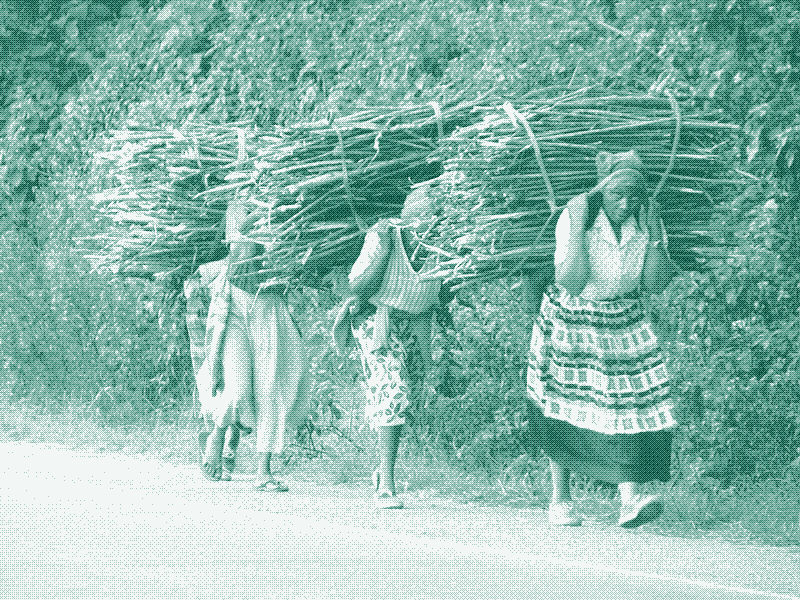
These numbers confirm that it is not biomass energy that’s unsustainable. If the whole of humanity would live as the 40% that still burns biomass regularly, climate change would not be an issue. What is really unsustainable is a high energy lifestyle. We can obviously not sustain a high-tech industrial society on coppice forests and line plantings alone. But the same is true for any other energy source, including uranium and fossil fuels.
Reactions
To make a comment, please send an e-mail to solar (at) lowtechmagazine (dot) com. Your e-mail address is not used for other purposes, and will be deleted after the comment is published. If you don’t want your real name to be published, sign the e-mail with the name you want to appear.
Reactions
Rafael Carrascosa
Thanks Kris, amazing work
timo
Thank you! I always thought of pure aesthetical reasons why pruned trees exist. I learned something today :)
Craig Macdonald
I found this piece very instructive and inspiring. I think it is going to change the way I restore a small plot of land we now own in southern France.
I would like to point out what appears to be an error in the text of Note [11]: I believe the word “easier” found in the first sentence ought to be “harder”.
a
[14] is not linked in the article.
Martin
What I like and highly appreciate from low-tech magazine is, that you find clever old techniques and other mind set approaches that can be reconsidered for our modern world. Nobody would really want a world where the newest tech is negated and stigmatised as the source of all the bad things. High-tech helps in many ways to have a better life on earth but these advances are all the time thematized by most media. So the low-tech side gets here a representation. But it is no decision between two poles. Our information age allows us to reconsider forgotten techniques better than ever before, when it was mostly driven by heriting from the direct ancestors or the surrounding population.
If the goal of the article is to make woods cultured sustainable, in energy sourcing matters I will suggest to at least gasify the biomass and then burn it or better use the material first for useful items like cardboard and then burn it in cogeneration. Better of course it is turned into longterm products like houses. That is really sustainable, because in our unsustainable world it is not sufficient to just do no further harm, but make it better.
Daniel
I’m looking forward to seeing a 20 or 30 million people conurbation heated with coppiced wood. Let’s get real. These techniques are suitable for small communities, as in villages, not for bilions of people.
Laszlo F.
I come from an area with great history and pride in sylviculture & forestry and thus I always wanted to believe that forests can only exist detached from agriculture. After all, who would like to associate themselves with smelly farms, dung and peasantry when you can dress in an all green uniform and sing hymns about nature all day? Looks like I was terribly mistaken, those dehesa landscapes are mesmerizing and seem like a bloody smart solution to combine wood production with agricultural activity. Though I imagine with all the invasive species and weeds growing everywhere it can be a pain to manage them, especially in contemporary Europe (full forest cover can mostly eliminate that problem).
@Daniel: Solve a problem today, have one less tomorrow. There are estimates that the ongoing COVID pandemic may set back the course of global urbanization by qutie a few years. Millions of people around the world won’t be moving to cities as forecasted, but remain in villages and townships and keep heating with locally produced wood. So despite the fact that pruning and coppicing scales awfully, it can have an effect in many developing areas.
kris de decker
Hi Brian,
You ask a relevant question that I left out of the article on purpose because it deserves an article on its own. It is possible to greatly improve the health outcome of wood heating, for instance through wood gasification and very high combustion temperatures, such as those in tile stoves and masonry heaters. Stoker skills could also be improved.
I don’t think we need to go back in time, or stick to the status quo of wood heating as it happens now. Up to a certain extent, sustainability can be in conflict with human health, but before I come to conclusions about that I would need to investigate how far we could improve wood burning technology in different contexts.
All the best from Spain,
Kris
joel LeGrand
I am a big fan of the Rocket Mass Heater:
A rocket mass heater is:
cheap to run. About a tenth the cost of natural gas, electric or conventional wood heat.
clean. They emit about a hundredth of the smoke of a conventional wood stove.
good for the environment. Less than 2% of CO2 emissions of natural gas or electric heat. Can reduce your carbon footprint as much as parking 7 cars.
sustainable. It uses a renewable fuel which is easy to find and store.
cheap to build. About $200 to $600.
quick to build. Often built in a weekend
luxuriant. Like the luxury of a heated floor but without all that standing.
https://permies.com/forums/search/search/-1?match_type=all&sort_by=time&q=RMH&groupByTopic=true
Bruce Teakle
Thanks Kris for another excellent essay. I congratulate you on persisting with describing the importance of traditional wood energy use, despite some negative feedback.
Considering the negative feedback, clearly from people holding genuine concerns about environmental issues, 2 issues appear to me.
The first is theoretical: understanding how the carbon cycle works. Forests are not a carbon “sink”, into which modern humans can dispose their fossil fuel CO2 emissions, they are a carbon store. Forests hold a limited capital of carbon, cycling a little as leaves rot, trees die, and new growth occurs. Every stick and leaf that is formed by plants will return its CO2 to the air, when an animal, microbe or fire harvests its energy. For the entirety of human existence, we have been part of that cycle.
Only rarely is the carbon stored as peat or charcoal for longer periods - our modern growth and climate problems come from having discovered how to burn these long-term stores.
The second is practical: if you don’t work in the forest, it’s hard to understand the practical manifestation of the carbon cycle. If you work in reforestation or in restoring the health of existing forests, the surplus of waste wood can be overwhelming.
In Australia, where most of our forests dry and burn periodically, the Aboriginal people developed sophisticated systems of cool burning that managed fuel loads and protect the forest from hot fires. White people took the traditional owners and their fire practices out of the forest, so fuel loads escalated.
Now, enhanced by warming climate, hot bushfires burn up the carbon capital of the forests, not just the cyclic accumulation, with terrible ecological and human consequences. Fixing these forests requires dealing with a huge surplus of fuel.
Clearly wood can’t provide the energy to run the huge population and rapacious lifestyles of modern humans, but it is a valid and sustainable fuel when used in a balance.
David Bourguignon
@Kris
Thanks for this complementary info. Now I start to understand a bit better what Low-Tech Magazine is all about. Therefore, I suggest the following definitions for low- and high-tech and they have nothing to do with technologies themselves and their relative oldness/newness, since IMHO this ends up with non-operative definitions. (And your strange statement: “we have long invented every technology we need”… How do you know that, if we do not know what we do not know, as any scientist would say?)
My alternative proposal:
Example: using autonomous drones for reforestation.
Example: using satellite Internet mobile communication to help local communities develop their own network of local native tree species nurseries, fostered by timebanking transactions.
As you noticed, I avoided on purpose focusing on the age of the technology and rather focused of how much of it is used in developing the entire solution. Maybe better examples could be found… What do you think?
Last but not least: “The direction you suggest doesn’t seem to include any of that [other non-technological forms of innovation].” Well, on the very contrary… They are intensely low-tech, but still relying on tiny pieces of technology that are yet to be developed. Therefore, we will need to invent a few new technologies and methods for reaching transformative objectives.
Gregory Corning
I note that the much-hated exotic invasive Siberian elm (Ulmus pumila), which grows fast and spreads very fast here in New Mexico USA, is excellent for coppicing, based on my experiences. Maybe coppicing can be a way to manage invasive species while getting some benefit from them.
Fin Butler
@David
Also coppicing and the like doesn’t need to be done to every last bit of the landscape, and I see no reason why dense “wild” forests and coppicing practices wouldn’t exist together (in fact if I bothered to do research right now Im sure I could find examples of such).
As well, we have much better information sharing currently (and even transitioning to lower tech life style is one of the things I expect us to keep (even if we switch to other methods)) so avoiding mass deforestation is certainly practicable, especially if you remove the incentives to deforest. Agreed on Kris De Decker’s points.
Bart Vanden Driessche
@Kris De Decker
I think David suggests that we should move to agroforestry and maybe foodforests.
Although I think wood for heating and other uses discussed in previous articles.
It is also important to know that coppiced has other use then being burned as wood or charcoal. It was often used in buildings as construction materials and basketry.
as example daisugi in Japan
There was last year a reportage on ARTE named The beauty of pollards.
Hanno Hodgkin
I’m all for deconstructing the high energy society in which we live, and really want to be able to support seemingly sustainable systems like coppice management.
But as a market gardener and small farmer my attitude is that what is grown on the land must stay on the land. My intuition says that if I grow a crop of hay and sell it to my neighbour, hence returning nothing to the soils that grew the hay, my soils will be depleted, and over time my hay crops will decline. Thus we only sell the small amount of biomass we ‘skim’ off the top of the farms nutrient and energy cycles, the rest of the biomass ’life’ if you will, being kept on the holding.
i.e. the vast majority of the biomass of the holding musty stay on the holding or else the overall productive capacity of the farm will decline.
So, given I really want to believe in low impact forrest management techniques which can give me timber for building and wood for burning, can someone please explain. How does this not in the longer term decrease the ’life’ of the farm/capacity/health of the soils?
If I just burnt my hay every year, even if the ash was returned to the land, over time the capacity/potential of my soils would decrease and yields would fall. Why is forestry different? Can we harvest close to 100% of a coppice crop and burn it without gradually undermining the capacity of the land/soil to create biomass, without undermining the ’life’ of the land.
Goran
Kris,
Thanks for another enlightening article.
I very much would like to recommend the work of Ben Law in England (e.g. his book “The Woodland Way”), mainly focussed on living in the forest and living off the forest. He stewards an area of mainly sweet chestnut coppice that is centuries old.
Regarding lime trees (Tilia cordata) - the fresh leaves are also edible for humans. And delicious. Unfortunately the gastronomical use has been largely forgotten. I maintain a small hedge of lime trees for salad use in our garden.
And of course the global population and energy use will go down considerably. Either in a planned way or unplanned.
What is not sustainable will eventually stop…
Thanks again,
Goran
Raphaël
This article inspires me :)
As for the reportage mentioned by Bart Vanden Driessche in comment (20), it is from Timothée Janssen (France, 2017, 52minutes), freely available in French until October 18th!
https://www.arte.tv/fr/videos/073104-000-F/trognes-les-arbres-aux-mille-visages/
Thomas Reis
Everybody who has a horse knows how much litter a horse needs. Towns used a huge portion of green brushwood. So a whole race lived from collecting brushwood in German also called Reisig, my surname derives from this practice. You find many pictures about ‘Reisigsammler’ on Google. And until today ‘Schnittreisig’ is cultivated from conifers. https://de.wikipedia.org/wiki/Datei:Gewinnung_von_Schnittreisig.jpg
Gary
@ David Bourguignon (#22)
“In fact, biomass extraction by the rural civilisation has always slowly degraded the quality of the planetary life-support system, has always fostered population growth and the advance in extractive technology”
This is quite simply not true. When you have a localized rural economy the biomass production largely stays local and greatly enhances the biome.
For an example of this see anthropogenic soils.
Worzel
@kris de decker
I think you’ve missed the point entirely.
Brian Sawers
In Slovenia, the most obvious improvements are better fuels (cured hardwoods, no scrap wood) and better stoking. I continue to be astonished that people who light 100+ fires a year cannot light a hot fire, but the smoke does not lie. But I am not very optimistic. Most houses already have a tile stove (called a peč). Many people cut their own firewood, which appears to be softwood exclusively. Lastly, people seem to have very little concern for air quality, even though we get a daily reminder. When the air is clean, the mountains are clearly visible. So any improvement would have to be both cheap and easy, since so many are not interested in paying more for something they don’t value (cleaner air).
It would seem our environmental problems would be simpler to solve if more people lived in places with low energy demands, like Spain or Southern California. If anything, I read (Canadian) environmentalists praising living in places with hard winters and cool summers.
Sébastien Dawans
@Hanno Hodgkin
Perhaps there is a distinction to make in your discussion: annual crops vs perennials (trees).
You are right in that most annual crops, even when leaving on-site all the extra biomass, will still result in a net exportation of organic matter. This requires a constant re-supply in the form of mulch, compost, green-fertilizers…
For trees though, it’s a bit different. The permanent presence of a tree tends to increase the carbon content of the surrounding soil over time. The principle carbon source being atmospheric CO2 in photosynthesis, the carbon reserves in the soil do not get depleted. In fact, they increase through 2 processes:
Deposition at the surface (leaves, small branches), which eventually get composted and form a layer of soil.
Rhizodeposition, which is complex but includes a net flux of atmospheric CO2 to organic C in the soil over time.
Seth
Thanks for this article!
It’s funny how, when one assumes that something has to be a specific way, it can become a trap: e.g., ‘firewood is a wedge-shaped chunk of a large tree.‘I spent a few months helping out on a homestead in the Yukon province of Canada, and the people there wanted to be low-tech but they believed using a chainsaw to harvest firewood was completely necessary because they were cutting down (dead) trees a foot in diameter and bucking them up. And they had lots of space for a coppices, in fact I think they had a few already for baskets.
Dave Bross
Along these lines, and something all here might enjoy, is the book Tree Crops by J. Russel Smith. It’s in the public domain so available via the Internet Archive:
https://archive.org/details/TreeCrops-J.RussellSmith
He suggests a number of low to no maintenance tree crop ideas for feeding livestock and many other ideas for getting a LOT of food value from trees. He wrote it in the 1920s or 30s but it’s still viable today.
Emilien
Thank you Kris for this inspiring and well documented step aside.
The prunning techniques reminded me of Syntropic Agriculture pioneered by Ernst Götsch to turn an arid land in Brazil into a dense, diverse and fertile forest hosting crops (like cacao and coffee) with very high yield and quality. In the process it restored local water cycles by creating a micro climate. Prunning fast growing trees is at the core of the practice to put as much biomass as possible on the ground to accelerate soil creation.
https://agendagotsch.com/en/pruning-instead-of-fertilizers-and-irrigation/
@David
This example shows that prunning techniques applied with a different mindset than in pre-fossil-fuel Europe can be a powerful leverage to accelerate the large scale “land rewilding” you are advocating for. Also a portion of these forests can host high yield crops too.
The notion of syntropy (as negative entropy) is the best I can think off to answer the article title. When applied to forest I guess it would not hurt the dynamic to extract a minor portion of the wood to fuel efficient wood stoves to help me and others to survive the winters.
John Proctor
Very enlightening read. It is said in the “can coppicing be mechanized?” section that the only purpose of mechanical coppicing would be fuelwood. I am not a participant in the timber industry, but about 10 years ago I worked for a construction company in America and witnessed the rise of “engineered wood” products. The engineered members could carry more load, were cheaper, and weighed less than the traditional dimensional lumber they replaced. I was told that oriented-strand-board (OSB) was cheaper as it is made from younger, smaller poplar trees. Can coppiced wood not be used for such building materials as OSB?
I do agree with others that harvesting wood for export depletes the soil’s nutrients- this is not a sustainable practice. I do feel it more sustainable than current practices, so worth a look.
Manihot Esculenta
I live in the tropics and have recently planted hedgerows of vetiver (Vetiveria zizanioides) with an eye to using the Leaves for fuel, see here https://www.vetiver.org/the-vetiver-system-land-stabilization-and-energy-production/
Elijah Sanders
The comments you mentioned sound like they come from a bunch of ignorant communists.